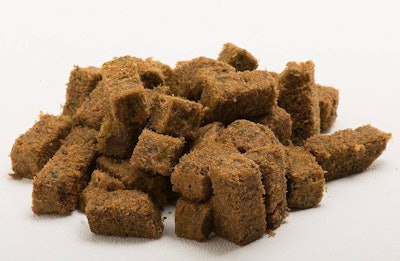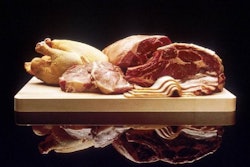
Premiumization of pet food is driving the pet specialty market’s continued growth, which sits at 5% year over year, said Maria Lange, business group director, pet care, Gfk, speaking at Petfood Forum 2016 on April 19.
Two opposite trends are happening to boost the pet specialty market, according to Lange: premium and value. Consumers continue to demand premium pet foods, whose price per pound increased 7% since January 2015. At the same time, other consumers are looking for similar specialty products but at a lower cost.
Within the pet specialty market, Lange said three categories should be closely monitored going forward:
1. Grain-free pet food
Data show that one-third of all pet food sales in the US are grain-free. But Lange pointed out that, of all new product introductions in 2015, nearly 45% of these items fell into the grain-free category, which she said shows potential for future growth. Grain-free pet food, the driver of the overall “natural” sector, is growing at nearly 25% year over year.
2. Freeze-dried pet food
Lange’s data showed that freeze-dried pet food grew 63% in 2015. The number of new products introduced doubled in 2015 compared with 2014 as retailers are increasingly devoting more shelf space to this pet food category. The overall freeze-dried pet food category grew from $120.1 million in 2014 to $195.4 million in 2015, and Lange projected freeze-dried pet food to surpass $200 million in 2016.
Within the freeze dried category, Lange said the “mixer” category is growing fastest. But, another potential area of growth could be in wet foods in trays, she says, as manufacturers in the US begin to transition from selling wet food in cans to selling it in trays or pouches, as is common in the rest of the world.
3. Dehydrated pet food
Within pet specialty, dehydrated pet food has seen the most rapid growth in 2015, rising 72%. In terms of sales volume, Lange’s data showed this category jumped from $15.2 million in 2014 to $26 million in 2015.
Lange concluded by saying that, for all these pet food specialty products, the industry should monitor how premium is trending compared with value natural going forward.
Petfood Forum 2016 was held April 18-20 at the Kansas City Convention Center in Kansas City, Missouri, USA.
















